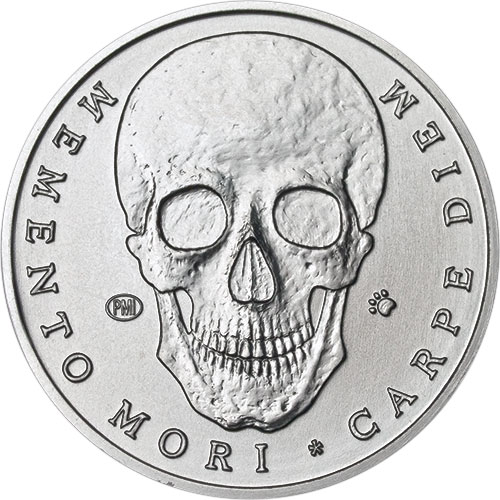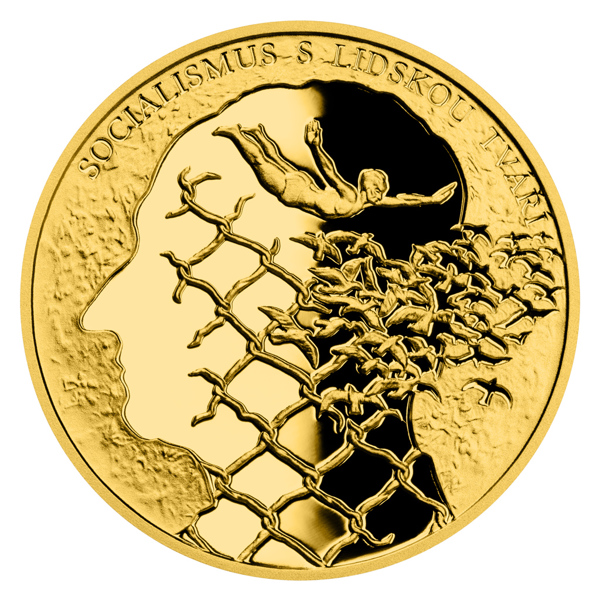New Facts On Quality Control Prague Mint Coins
Wiki Article
What Is The Purpose Of A Mould Made Of Plaster? Serve As The First Physical Representation For A Gold Coin, Medal Or Other Object?
Creating a plaster mold or "maquette" inspired by a gold coin or medal design involves several steps to transform the two-dimensional model into a 3D physical representation. The initial Design Reference- The artist or designer draws on the design of the gold coin or medal to serve as a reference. This could be a sketch drawn by hand or a digital image created with graphic design software. Selecting a medium- Plaster, because of its flexibility, is commonly employed for maquettes due to its malleability. The wax or clay could also be utilized.
Preparation of Plaster- Plaster is mixed with water to create an able consistency. In order to ensure a clean mould, the mixture must be smooth and free of lumps.
Making the Base- Create a base, or platform on which the maquette sculpture will be made. This base can be a plank of wood or a flat surface to provide stability.
The Maquette is sculpted by using the gold design as a template. The plaster is shaped into a relief, or three-dimensional representation of the coin or medal.
Detailing and Refinement - The artist adds details, refines the contours and makes sure that the proportions are accurate and design elements. This process requires focus and precision.
It is important to allow the plaster to dry and hardenAfter a sculpture is finished, it needs some time to set and set. This allows the maquette's form to be retained and its hardening.
Finalizing the Maquette - Following drying out, the maquette will be smoothed further to remove any bumps and rough areas.
Sealing and PreservationIn order to protect the maquette and make it ready for future processes like scanning or molding the maquette, a sealant or protection layer could be applied on the surface.
The maquette of plaster is an 3D tangible illustration of the design for the gold medal or coin. It acts as a tangible reference for the next stages in production. For instance, it is possible to use it to digitize the image or make molds for mass production. Or, artists can use it as a model to visualize and refine their design before final production. See the top rated Prague Mint gold medals plaster molds blog examples. including $20 gold piece, apmex gold coins, 1933 double eagle, gold sovereign coins, chinese gold coins, gold coin 24k price, 1 4 ounce gold coin, guardian angel coin, gold sovereign, gold buffalo coin and more.

Why Do Dies Used For Striking Gold Medals Or Coins Undergo Vacuum Hardening Processes?
In order to harden dies for gold coins or medals, they are subjected to controlled temperatures in the vacuum oven. This is the basic information on vacuum hardening dies.
It is essential that the dies used to strike coins and medals are free of any residues and contaminants.
Loading Vacuum Furnace
The dies go into the vacuum chamber.
Evacuation of Aircraft
Vacuum furnaces remove air from chambers, creating an oxygen-free atmosphere. This prevents oxidation and ensures uniform heat treatment.
Heating Phase
The furnace is heated up to the temperature needed to harden the dies. The temperature range will be determined by the type of material and the method of hardening.
Soaking in high temperatures
The dies stay at higher temperatures for a certain duration, allowing materials to attain the desired hardness level and also maintain the metallurgical structure.
Quenching (or Cooling)
After soaking, the dies need to be quickly cooled using specialized techniques. The speedy cooling allows the metal reach the required hardness.
Tempering is an option
In certain cases, process of hardening can be followed by a tempering process. Tempering involves heating the dies to a lower temperature to reduce internal stress and increase the toughness of the die while maintaining its their hardness.
Quality Control & Inspection
Dies with hardened material must undergo rigorous quality control and inspections to ensure they achieve the desired strength, hardness or tolerances.
Post-Treatment Handling-
The dies will then be processed further like coating or polishing, prior to being used to create the strike of the coin or medal.
The vacuum hardening method increases die durability and wear resistance, as well as the lifespan of the dies used to create silver or gold coins and medals. This procedure, which creates an atmosphere free of airborne contaminants, ensures that dies are consistently hardened and safely, which improves the overall quality and durability of the products. View the most popular vacuum hardening Prague Mint gold coins blog advice including 20 dollar gold coin, 1 10 ounce gold coin, one ounce of gold, 100 grams gold biscuit, 1 10 gold eagle, angel coin, gold bullion, olympic games gold medal, american gold eagle, gold and coin dealers near me and more.

Why And How Are Certain Surfaces Or Textures That Resemble Matte Or Textured Surfaces Achieved Through Sandblasting?
Sandblasting can be used to produce textured or matte surfaces on gold coins and medals. This is the reason and how it's done.
Surface preparation- The coin, medal or other item is placed in an enclosed chamber or cabinet equipped with the nozzle which is connected to compressor. This chamber is usually enclosed in order to keep the abrasive used to prepare the surface.
The medal or coin is then sprayed with an abrasive material, which could include glass beads, sand, silicon carbide or aluminum oxide.
High-Pressure Propeller - The abrasive particle is propelled onto the surfaces by compressed air. The finish or texture is determined by the force and speed at which the particles impact the surface.
Texture Creation: The force of the abrasive particles on the surface results in an appearance that is matted or textured by altering the topography the surface. This process can selectively roughen specific areas or produce uniform texture across the entire surface.
Controlled Application – Sandblasting's intensity length, duration, and the angles of application are all controlled to produce different designs or textures. Different pressure levels, abrasives and abrasives result in different outcomes.
Reasons for Sandblasting
The process of sandblasting enables the creation of various textures or surfaces such as mattes, frosted, or grainy surfaces. This creates visual interest and unique features to coins or medals.
Aesthetic Enhancement - Sandblasting alters the appearance of the surface, reducing light reflection and reducing shine, which can enhance the coin's or medal's visual appeal. Matte finishes in particular, draw attention to certain design elements because they minimize reflections.
Anti-Glare Property - Sandblasting produces matte or textured surfaces that minimize reflections, glare and makes the item more attractive.
Contrasting Elements in Design - Sandblasting is employed to create contrasts between different areas which are polished or textured on a coin or medal. This is done to highlight specific design elements or add depth and dimension.
Sandblasting provides customization options that allow for artistic expression, and allows coins or medals to be created with specific textures or finishes to the design.
Sandblasting produces different textures and finishes on the surface of gold coins and medals. This improves their appearance, appeal and aesthetics. Take a look at the best sandblasting Czechoslovakia gold medals more tips. including 1 10 ounce gold coin, order gold coins, gold coins and bullion, gold bars for sale near me, 2000 gold dollar, double eagle coin, 20 dollar coin, 100 grams gold biscuit, gold bullion cost, 1oz gold price today and more.

How Do You Feed Blanks Of Gold Into Coin Presses?
In the process of coining, blanks of gold are placed in coin presses under intense pressure. Then, they are stamped to produce finished coins or medals. This is a brief overview of the process of loading blanks.
A feeder system is connected to the coin press. This system loads gold blanks that have been prepared and checked for quality. The feeder system is responsible for ensuring that blanks are continuously flowed to the machine.
Feeding Blanks to the Press
The feeding system was designed to direct the blanks in one-by-one into the chamber for striking. The feeder system makes sure that each blank is precisely placed to be stamped.
Alignment and Positioning
The blanks are then positioned and aligned inside the chamber for striking of the press in order to ensure they are perfectly centered for the stamping operation.
Striving under High Pressure
The coin press is made up of two dies: one stationary and the other one moves. The stationary dent contains the impression of the design that is negative while the moveable die is the Hammer.
The moving die strikes the blank with significant force, which transfers the design onto the blank's surface. The pressure exerted by the dies creates the design and creates the relief that is raised as well as specifics on the coin or medal.
Repeated Striking -
For higher-quality coins or medals particularly collector's or proof editions, multiple strikes might be employed to produce the most precise, sharper visual or a design. Each strike refines the surface of the blank.
Ejection and Collection
Once struck, the newly-minted coins or medals are ejected from the press, and then placed in containers or trays. Quality control is carried out to ensure that the designs conform to the specifications.
Post-Processing-
Minted coins and medals can undergo additional processing, such as edge lettering, edge reeding, or even post-strike treatments depending on the design requirements or mint specifications.
The process of stamping under extreme pressure is crucial as it transfers the desired design onto the gold blanks, turning them into finished medals or coins that are ready for circulation, collection, or commemoration. The process of stamping requires accuracy as any the variations in pressure and alignment can affect the quality of the final product. Have a look at the top rated minting Prague Mint gold medals blog examples. including apmex gold coins, silver eagle coins, gold penny, gold coin dealers near me, 20 dollar coin, gold silver dealers, coins and gold, gold & silver bullion, silver eagle coins, gold eagle coin price and more.
